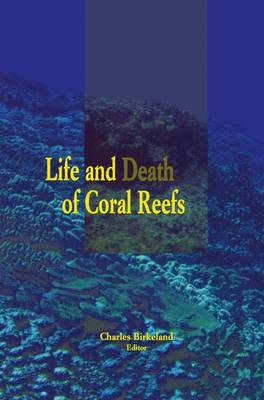Charles Birkeland Living coral is a thin veneer, measured in millimeters. Yet this thin film of living tissue has shaped the face of the Earth by creating limestone structures sometimes over 1,300 m thick from the surface down to its base on volcanic rock (Enewetak Atoll), or over 2,000 km long (Great Barrier Reef). About half the world's coastlines are in the tropics and about a third of the tropical coastlines are made of coral reef. Archipelagoes of hundreds of atolls such as the Marshalls, the Maldives, the Tuamotus, and most of the Carolines and Kiribati have been fonned by coral. In addition to enlarging high islands (such as the entire northern end of Guam) and extending and protecting coastlines, ancient biogenic reefs have fonned even larger areas on the present continents. Shallow living coral 2 reefs are estimated to presently cover over 600,000 km (Smith, 1978). Coral reefs are dynamic systems, producing limestone at the rate of 400-2,000 tons per hectare per year (Chave et aI. , 1972). The Great Barrier Reef dominates 2 230,000 km and has grown to this size in a geologically brief period of a few million years. Coral reefs influence the chemical balance of the world's oceans. Roughly half the calcium that enters the sea each year around the world, from the north to south poles, is taken up and temporarily bound into coral reefs (Smith, 1978).
- ISBN13 9780412035418
- Publish Date 31 January 1997
- Publish Status Active
- Publish Country GB
- Publisher Taylor & Francis Ltd
- Imprint Chapman and Hall
- Edition 1997 ed.
- Format Hardcover
- Pages 536
- Language English
